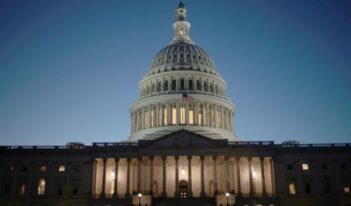
The Bureau of Land Management’s relocation sets the stage for other federal agencies to leave Washington.
If two senators have their way, a large segment of the federal government will soon be moving out of Washington, D.C.
Recently, U.S. Senators Josh Hawley (R-Mo.) and Marsha Blackburn (R-Tenn.) introduced legislation that would move the headquarters of 10 federal agencies out of Washington, D.C. Agencies the bill would relocate to the Rust Belt and western states include the U.S. Department of Health and Human Services, the U.S. Department of the Interior, and the U.S. Department of Energy.
The Hawley-Blackburn bill follows efforts by the Trump Administration to move the U.S. Department of Agriculture to Kansas City, and to use the Administration’s existing authority to relocate several subdivisions of federal agencies, such as the Bureau of Land Management (BLM). These executive relocations could even serve as pilot projects for moving still more agencies out of Washington without approval from Congress.
Until lately, almost all federal agencies have had their headquarters located in the Washington, D.C. area, with additional regional offices located across the country. The BLM followed this pattern until the fall of 2019. But most employees in the BLM’s Washington, D.C. headquarters received a notice in November 2019 that their positions would be moved to a new location—either the agency’s new headquarters in Grand Junction, Colorado or an existing regional office.
Beyond a skeleton crew of agency employees who would remain in Washington to process public requests for information about agency activities and to conduct budget work, the BLM staff working at the agency’s headquarters received a month to decide whether to move with their position or accept a buyout package from the agency. Staff also had a window of about a month to relocate to their new assigned place of work, and they received notice that their pay likely would decrease after relocating.
Even though U.S. Senators Hawley and Blackburn support moving agencies out of Washington, Democratic members of Congress have expressed concern about such agency relocations. U.S. Representatives Jennifer Wexton (D-Va.) and Eleanor Holmes Norton (D-D.C.) introduced a bill to block the Trump Administration’s attempt to move the BLM westward. Representative Wexton separately noted that most BLM staff already serve in the field across the country, and those who work at the BLM’s Washington headquarters serve as “vital liaisons” to decision-makers in the capital. Representative Wexton also raised budgetary concerns about the BLM’s move, as the relocation effort has proceeded without any budgetary approval.
Outside of Congress, other interested parties appear wary of the BLM’s move from the nation’s capital. Environmental groups charge that the current move lacks a “fact-based rationale” and failed to benefit from any input from affected agency employees. A letter from the Public Lands Foundation to the Senate Appropriations Committee also charged that the move really served as an improper means to drive out experienced staff and consolidate power for political appointees. Others criticized the optics of the fact that the Grand Junction BLM headquarters will reside in an office building owned by the Chevron Corporation, a large American oil company.
Analysts indicate that the ultimate economic impact of moving many Washington area federal employees to new regions across the country may be outweighed by other considerations. Talent drain occurs with major relocation efforts, and it may be perpetuated as those on the job market may not want to leave the Washington metro area. Relocation would also impact the ability of agencies to communicate with each other and with Congress, which is currently facilitated by their offices’ physical proximity.
These negative consequences may be amplified if Congress approves the Hawley-Blackburn bill, but Democratic opposition to moving the BLM to Colorado makes congressional passage unlikely.
Considering that the BLM is only one month into its journey westward, the long-term effects of the agency’s relocation are not yet certain. For those policymakers like Haley and Blackburn who seek to move other agencies outside of Washington, they must hope the new model for the BLM’s operations is but a sign of things to come.



